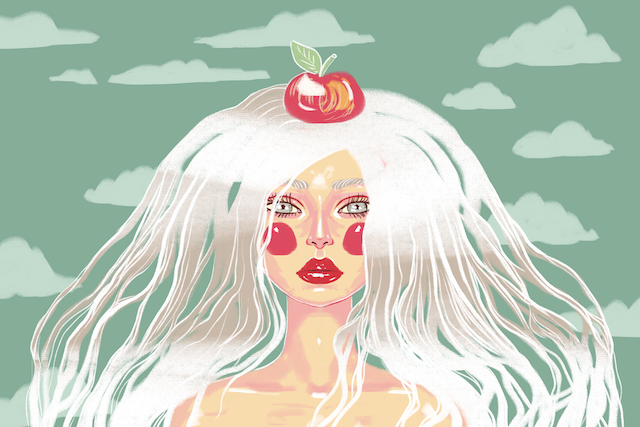Where to Find Joy and How to Cultivate It
Teachers Christina Feldman and Jaya Rudgard explain piti, one of the seven factors of awakening, and why it’s so important The post Where to Find Joy and How to Cultivate It appeared first on Tricycle: The Buddhist Review.

Christina Feldman: One of the most important teachings of the Buddha around joyfulness is that joy is not dependent upon having ideal or perfect conditions in our lives. Rather, joyfulness is a quality that is inwardly born and generated, possible in all moments. In the Dhammapada, one of the much loved early texts of the Buddha’s teaching, the Buddha says,
Abide in happiness free from hostility amongst those who are hostile. Abide in joyfulness free from distress amongst those who are miserable. Abide in happiness free from agitation and busyness in the midst of those who are busy. Joyfully, we live, those who cling to nothing.
Not Dependant on Ideal Conditions
The Buddha speaks about joyfulness in two different ways: as sensual joyfulness and non-sensual joyfulness. Thinking about sensual joyfulness, the world would be a much poorer place without art, music, poetry, and literature. There’s joyfulness we find in our connections with the natural world and with those that we care about. Joyfulness in the sensual world points to qualities of wholeheartedness, being present, being able to listen, and being able to be attuned, gladdened, and uplifted. This is not something to be dismissed or seen as somehow being unspiritual or unworthy. For many people, sensual joyfulness can be a powerful indicator of their heart’s capacity to know joyfulness.
The Buddha also speaks very much about a non-sensual joyfulness, and here the Buddha is pointing to the capacity we have to cultivate the sources or the roots of joyfulness within our own being. There are different aspects of this. One of them is the meditative development of cultivating that inwardly collectedness, gatheredness, or stillness that is a home of joy. Another aspect is cultivating our capacities for generosity and care, and beginning to notice how they have a taste of joyfulness and happiness.
For many people, sensual joyfulness can be a powerful indicator of their heart’s capacity to know joyfulness.
Unfortunately we live in a culture where there’s often a very powerful joy deficit. We see that one of the universal patterns of human’s consciousness is to have negative attentional bias. We tend to focus on and highlight what is wrong, broken, or imperfect. And it’s certainly not to suggest that everything is perfect and well in the world. There is much that is unacceptable. But we see how often we walk into a room or a situation, see another person, or look at ourselves, and what is highlighted in our attention is actually that which we feel needs improvement, or needs to be gotten rid of, or is somehow flawed or imperfect.
The cultivation of joyfulness, however, teaches us a great deal about coexistence. Yes, there is affliction, there is that which is broken and that which is heartbreaking in life. It lives side by side with that which is well, or that which can be celebrated and appreciated. For years I taught in a university in the same room every week, and the carpet on the floor was nothing special, but it had a coffee stain. And the coffee stain lived there for years. And people would sometimes come into the room, and the first thing they would talk about was the coffee stain on the carpet. And I said that 99 percent of the carpet is doing just fine. But we have the one percent that has a coffee stain, and perhaps it could use cleaning. But do we actually see the 99 percent that is really doing just fine? So we see this play out in our lives, where we need to care for and attend to that which is broken and needing care. But that does not exclude the actuality that there is also wellness. If you look in your body just now, there may be places of discomfort and pain. There are also probably many places in your body that are actually doing just fine and are at ease.
Not Something That Happens to Us
One of the effects or functions of sati, or mindfulness, is to rebalance negative attentional bias. We know that we cannot make ourselves joyful, and there’s something very inauthentic about a contrived cheerfulness or contrived joyfulness, but we can learn to make room for joy. We can begin to cultivate our capacities that we have for receptivity, appreciation, attunement, celebrating, and undertaking the wholesome. Mindfulness is a great ally in this, and when we cultivate joyfulness in the midst of the changing, uncertain conditions of our lives, the joyfulness of a heart that can be gladdened.
Jaya Rudgard: You could also think of piti as enjoyment—that joy and all the awakening factors are not just mind states that fortuitously arise. Rather, we have the chance to actually cultivate and attune the mind to these particular qualities.
We have a very strong tendency to view joy as something that either just happens to us by chance in lucky moments or as something that we have to deserve—that we get as the fruit or reward of good behavior or skillful cultivation. We can reframe that for ourselves by thinking of joy as something that we can offer as a gift to the world rather than something that we take or have to wait to receive.
One place that we may overlook the arising of joy is simply in the subsiding or absence of difficult states of mind. When we notice that a sense of ill will that has been present has started to subside, there’s also a sense of relief that comes along with that. The Buddha had some beautiful similes for the waning of these afflictive qualities of the mind that we call the hindrances: It’s like healing from an illness, arriving at the end of a difficult journey, finding yourself released from prison, or having paid off a debt. There’s a sense of relief when we feel an afflictive mind state subsiding. Or, as Thich Nhat Hanh says, we notice when we have the toothache, but we forget to enjoy the moments when we’re actually free from having a toothache. So as mindfulness starts to appreciate these movements of change and the subtle shades of our experience, there are many moments that are available for our enjoyment that we may actually overlook.
We can reframe that for ourselves by thinking of joy as something that we can offer as a gift to the world rather than something that we take or have to wait to receive.
We can also practice the associated quality of mudita, or learning to take joy in the good fortune and the joy of other people, and this may be a way that we can apply mindfulness externally as well as internally. To become available to be touched by the joy or the good fortune of other beings around us. The Dalai Lama says that the seven billion human beings on the planet is seven billion opportunities for joy, and that we can start to allow the heart to vibrate with the quality of joy in other people.
Another accessible route into the experience of joy is the experience of gratitude and to take moments in our day to reflect on the blessings of our life and the ways in which we appreciate our good fortune, to also reflect on our practice.
Not an Optional Extra
Christina Feldman: In terms of being an awakening factor, joyfulness is actually not an optional extra. It’s not a reward or something as a side dish. If you truly see that you have the capacity for inwardly generated joyfulness, it changes your relationship to the world of things, people, and experiences. We don’t find ourselves pursuing this externalized happiness. We have the confidence that there is nothing that we’re going to gain through achievement, striving, or possession that is actually going to have that same flavor of inwardly generated joyfulness.
It doesn’t mean that we stop appreciating all that is lovely in the world. But we take ourselves out of this position of dependency. We are no longer hostage to the world of conditions, where we believe that our happiness and unhappiness is determined by whether we manage to be in touch with the pleasant sensation and get rid of the unpleasant sensation. There’s enormous freedom in stepping out of this craving impulse and having confidence in our capacity to know that joy is not dependent upon the idealized conditions we dream of.
During the lockdown here, my five-year-old grandson lived with us for three months, and our movements were quite restricted. So every day we would go take a walk to the nearby field. And one day he said to me as we were going, “Amma, we do the same thing every day.” And I began to apologize to him, giving him the whole story about how our choices were limited. But he said, “But I’m not complaining.” He said, “I have everything I need.” I found that quite startling and really quite joyful to be able to say, “I have everything I need.”
This article was originally published on August 27, 2021.

 Tekef
Tekef 
































.jpeg?trim=0,89,0,88&width=1200&height=800&crop=1200:800)